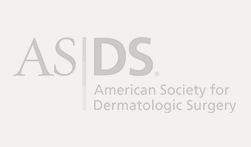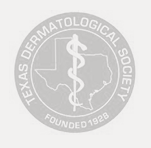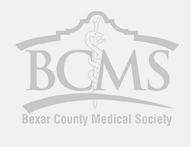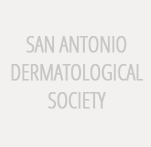Dry Skin vs. Dehydrated Complexion
Understanding the difference between dry skin and a dehydrated complexion is the first step to skin relief and its resuscitation.
DRY SKIN is a skin type.
Dry skin lacks oil (sebum) on the surface and between skin layers. It is a chronic condition.
Skin texture is rough and flaky, sometimes even cracked or fissured such as calloused heels. Dry skin also may be quite delicate, uncomfortable and itchy. Dry skin looks dull, matte, lifeless, and sometimes, ashy. It lacks bounce and suppleness.
On the upside, another tell-tale characteristic of dry skin: no breakouts and appears pretty much poreless. Oil is needed for blemish formation and to enlarge pores. Of course, oil is also needed to hold onto moisture.
DEHYDRATED SKIN is a skin condition.
Dehydrated skin lacks water. It can happen to all skin types , oily, combo or dry. Yep, skin can actually be oily and dehydrated at the same time!
Skin dehydration happens whenever the skin barrier is compromised, commonly with changes in temperature and weather, air travel, lack of sleep, lack of proper nutrients, stress, some medications, sun damage, bad health habits and over-indulgence (ie. alcohol is a diuretic).
Over-exfoliation and denying skin proper moisture, externally, and being negligent of internal hydration, also dehydrate skin. Skin may be tight and scaly, and wrinkles more visible. Skin also can suddenly become very reactive to your current skin care regimen and to the environment.
THE BASICS for both DRY + DEHYDRATED SKIN
1. Stay hydrated – drink water and eat water-rich foods such as melons, cucumbers, lettuce, squash, fruits, etc.
2. Add good fats (nuts, avocado, etc.), Omega-3, Vitamin E and other antioxidants to your diet. Antioxidants are like anti-rust agents for healthy cells. When cells are continuously assaulted by oxidative stress/free radicals, the protective “coverings” of cells corrode and crumble, never to be put back together again.
Outside factors that produce oxidative stress and free radical damage include unprotected sun exposure, pollution, processed food, preservatives, smoking, overindulgence in pretty much anything (food, alcohol, exercise), and general emotional and physical stress.
3. Avoid over-cleansing. Over-cleansing strips skin of any possible moisture, both water and oils, and causes the proliferation of dead skin formation on the surface. Dead skin buildup is like a road block for product penetration.
4. Avoid excessive use of manual exfoliants such as cleansing brushes and harsh scrubs. Gently dry brushing your dry body skin before moisturizing can be beneficial.
5. Use gentle chemical exfoliants to remove surface dead skin cells for product penetration and promotion of cell turnover. As with anything, too much of a good thing in regards to chemical exfoliants (too many peels, retinoids in amounts beyond the prescribed “pea-size,” etc.) damage the skin barrier, leading to a host of skin issues beyond perpetuating dryness and irritation.
6. Use topical antioxidants. Antioxidants are essential for the formation of healthy collagen and for the prevention of healthy cell destruction.
7. Use the proper moisturizer.
A tell-tale sign you are using the wrong type of moisturizer: dehydrated skin may break out with bumps and clogged pores when using heavy moisturizers, rich with oils, developed for dry skin. Dehydrated skin has a lack of water, not oils.
8. Use sunscreen. Think of sunscreen like a top coat for skin care products.
9. Use a humidifier, especially when heaters are in use.
10. Avoid long, hot showers.
11. Avoid products with alcohol and fragrances.
TREATING DRY SKIN
Keep your skin care regimen simple.
1. Epionce Milky Cleanser – Effectively removes surface impurities while leaving a thin layer of moisture on skin. It generally is the best practice to avoid all foaming cleansers.
2. Epionce Lite Lytic Tx – Anti-inflammatory and keratolytic technologies unique to Epionce promote cell turnover while also reducing redness and irritation.
Lite Lytic Tx is clinically proven to provide all the benefits of tretinoin 0.05% + lactic acid without irritation and photosensitivity. (FYI – Using Lite Lytic Tx with Renewal Eye Cream is clinically proven to reduce dermal density, masking those dark circles, by 20% with 4 months use.)
3. Epionce Priming Oil – a few drops for extra hydration, to lock in and hold on to moisture.
4. Moisturize. Our faves:
- Epionce Intensive Nourishing Cream
- Epionce Renewal Calming Cream
- Epionce Renewal Facial Cream
- Skinbetter Science TRIO
- Enriched Body Cream
TREATING DEHYDRATED SKIN
Be gentle to your skin. Feed your skin what it is lacking.
1. Epionce Foaming Cleanser or Milky Lotion Cleanser
2. Lytic Tx or Lite Lytic Tx
3. Use an Antioxidant Serum. Our Faves:
- Epionce Intense Defense Serum
- Skinbetter ALTO
- Vivier C E Peptides
4. Moisturize.
- Epionce Renewal Facial Lotion (Normal to Combination Skin)
- Epionce Renewal Lite Facial Lotion (Oily Skin)
- Epionce Renewal Facial Cream (Normal to Dry Skin)
- Epionce Intensive Nourishing Cream – feeds and relieves dehydrated skin (All Skin Types)
- Skinbetter FACE
- Epionce Enriched Body Cream
- Epionce Renewal Body Lotion
Other products for both DRY or DEHYDRATED SKIN:
- Epionce Enriched Firming Mask
- Anti-Aging Lip Renewal
- Epionce Renewal Eye Cream
- SUNSCREEN
TOP TREATMENTS for DRY or DEHYDRATED SKIN
- DiamondGlow with TNS Advanced+ Serum Infusion
- Dermal Fillers – particularly hyaluronic acid based fillers. Hyaluronic acid holds up to 1000 times more moisture than your skin possibly can.
- Hydrating/Replenishing Facials











